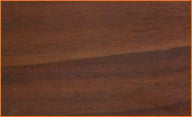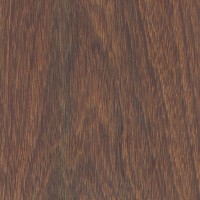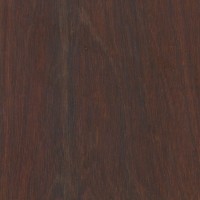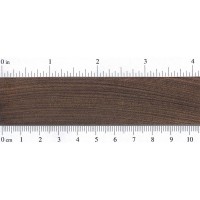| Ipe Lumber | |
PHOTO
|
 |
| DESCRIPTION | Ipe
heartwood is olive-brown with lighter or darker streaks. Grain is
straight to irregular with a low to medium luster. The pores appear as
fine yellow dots and contain yellowish lapachol powder which turns deep
red in alkaline solutions. Texture is fine and appears oily. Fine ripple
marks may be present. Weight varies between 60lbs to 75 lbs per cu. ft. Kiln dried Ipe is for interior use. Kiln dried lumber outside will expand. Air dried Ipe is for exterior use. Air dried lumber inside will shrink. |
| COUNTRY OF ORIGIN |
South America (Brazil) |
| BOTANICAL NAME | Tabebuia Serratifolia |
| OTHER NAMES | Pau D'Arco, Ipe Tabaco, Yellow Poui, Bethabara, Pau Lope ®, Ironwood ® |
| MECHANICAL PROPERTIES | Very high strength in all categories. Resistant to bending. A very strong, tough, resilient wood. |
| WORKING PROPERTIES | Difficult to work, especially in sawing. Severe blunting effect on cutters. Reduced cutting angle required for planing or molding. Pre-drilling required for nailing. Holds screws well. Stains and polishes well. Machine dust is an irritant. |
| DURABILITY | Very high resistance to all insect and fungal attacks and is very durable. Extremely resistant to preservative treatment. |
| SEASONING | Dries rapidly with slight warping, cupping, twisting and end checking. Slow kiln drying is recommended. Very small movement. |
| USES | Ideal
for bridges, naval construction, and dock work, exterior construction,
etc. It is also used for turning, factory flooring, tool handles,
archery bows, walking sticks, fishing rods, cabinet work, and veneers.
It is considered by many to be the best choice for decking material in the world. Be Sure To Visit Our Ipe Flooring Sale |
| COMMENTS | Specific gravity is 1.08. This wood is so dense that it does not float! |
janka hardness: 3600
======================
http://www.wood-database.com/lumber-identification/hardwoods/ipe/
 |
Common Name(s): Ipe, Brazilian Walnut
Scientific Name: Tabebuia spp. (Tabebuia guayacan, T. serratifolia, etc.)
Distribution: Tropical Americas (Central and South America)
Tree Size: 100 ft (30 m) tall, 2-3 ft (.6-1.0 m) trunk diameter
Average Dried Weight: 73 lbs/ft3 (1,175 kg/m3)
Hardness: 3,680 lbf (16,370 N)
Rupture Strength: 26,190 lbf/in2 (180,600 kPa)
Elastic Strength: 3,167,000 lbf/in2 (21,840 MPa)
Crushing Strength: 13,510 lbf/in2 (93.1 MPa)
Shrinkage: Radial: 6.6%, Tangential: 8.0%, Volumetric: 13.2%, T/R Ratio: 1.2
|
Color/Appearance: Heartwood can vary in color from a reddish brown, to a more yellowish olive brown, to a dark blackish brown; sometimes with contrasting darker brown/black stripes. In certain species, there are powdery yellow deposits within the wood. Ipe can be difficult to distinguish visually from Cumaru, another dense South American timber, though Ipe tends to be darker, and lacks the subtle yet characteristic vanilla/cinnamon scent while being worked.
Grain/Pore: Has a fine to medium texture, with the grain varying from straight to irregular and/or interlocked.
Durability: Ipe is among the most durable lumbers on earth, with exceptional resistance to decay, rot, and insect attack. Ipe was reportedly used for the boardwalk along the beach of New York City’s Coney Island, and was said to have lasted 25 years before it needed to be replaced: an amazing lifespan given the amount of traffic and environmental stresses put upon the wood.
Workability: Overall, Ipe is a difficult wood to work, being extremely hard and dense, with high cutting resistance during sawing. Ipe also has a pronounced blunting effect on cutting edges. The wood generally planes smoothly, but the grain can tearout on interlocked areas. Also, Ipe can be difficult to glue properly, and surface preparation prior to gluing is recommended. Straight-grained wood turns well, though the natural powdery yellow deposits can sometimes interfere with polishing or finishing the wood.
Scent: Ipe has a mild scent while being worked.
Safety: Although severe reactions are quite uncommon, Ipe has been reported to cause skin, eye, and respiratory irritation, as well as other effects such as headaches and/or disturbance of vision. See the articles Wood Allergies and Toxicity and Wood Dust Safety for more information.
Price/Availability: Ipe should be fairly inexpensive for an imported lumber; prices are usually comparable to other premium domestic hardwoods such as Cherry or Walnut.
Comments: Ipe is a wood of extremes: extremely dense and durable, as well as extremely difficult to work. Its incredible hardness and strength make it well suited for flooring applications, though it is referred to as “Brazilian Walnut” among flooring dealers—but it is in not related to the Walnut in the Juglans genus.Some common uses for Ipe include: flooring, decking, exterior lumber, veneer, tool handles, and other turned objects.



No comments:
Post a Comment